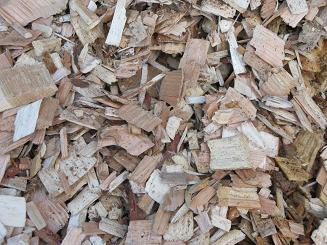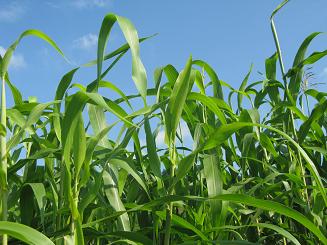Thought about growing a biomass crop for combustion fuel on your farm? This article offers three questions farmers can ask to evaluate growing energy producing combustion crops. It examines wood, woody crops and grasses in more detail.
![]() Find these topics and many other related Farm Energy media resources at the Farm Energy Media archive.
Find these topics and many other related Farm Energy media resources at the Farm Energy Media archive.
|
|
| Switchgrass briquettes a combustion fuel. Photo: Daniel Ciolkosz, Extension Associate, Penn State. |
Contents
- Introduction
- Forest wood
- Short Rotation Woody Crops
- Annual and perennial grasses
- Crop residue from other agricultural field crops
- Animal Manure
- Scale of Production
Introduction
Technically speaking, just about any recently living material can be combusted. However, that does not mean that all fuels are equally suitable. Farmers who are considering growing biomass for combustion should ask the following three broad questions when selecting a crop to grow:
- How costly and difficult is it to grow this crop?
- Is there a market for the crop?
- Are there potential negative side effects of growing the crop?
Although these questions offer a good method to compare the value of different feedstocks, the answers are not always obvious. The information in these pages will help farmers as they evaluate which feedstock is the right option.
While wood is the most commonly used biomass fuel, many other feedstocks can be used as well. Depending on a farmer’s circumstances and resources, it may make sense to consider any of a wide variety of feedstock options. Some of the more common feedstocks include forest wood, woody crops such as fast-growing trees, annual and perennial grasses, crop residue and animal manure. Most of these biomass products have one-half to two-thirds the heating value, on a dry basis, of coal. Manures have the lowest heating value, while woody products have the highest.
Forest wood
Wood fuel is widely available in woodlots on farms in most areas of the United States and throughout the world. Typically, saw timber has a much higher value than fuel wood. Therefore, firewood collection can often be used as a management tool to remove undesirable species and improve the long term value of a woodlot.
Short Rotation Woody Crops
Fast growing tree species such as poplar or willow can be grown as short-rotation field crops, with trees harvested every few years for fuel.
Annual and perennial grasses
Grasses show great potential for providing biomass combustion fuel, with high yields and easy compatibility with existing farming equipment. Switchgrass and Miscanthus are popular perennial grasses for biomass production, while fast-growing annual grasses such as sorghum and sudan grass can provide high productivity without the long establishment period needed for perennials.
Crop residue from other agricultural field crops
Research has suggested that a portion of the stalks and leaves from current field crops (i.e. corn, wheat) can be harvested and used as a fuel without damaging the field’s long-term productivity. These crop residues could provide a valuable additional product for farmers to sell for fuel.
Animal Manure
Manure is not a common combustion fuel in the United States, but is an important source of fuel in many developing economies. For information about a prototype system for dairies, see Eco-Combustion Energy System.
Scale of Production
The scale at which the crop is grown can vary widely. At the small end, some farmers may choose to grow biomass fuel only for their own use (~3 tons or less per year for home heating in the northeast United States). At the other extreme, farmers can grow biomass for sale to large scale power plants that use 1,000 tons per day or more. These wide differences in scale can have a large impact on suitability and profitability of different feedstocks and cropping systems.
Because of economy of scale, larger operations are often more economically attractive, because costs such as equipment, certifications and regulatory permits end up as a smaller portion of the total operating costs. Also, larger operations match better to the size of industrial buyers. For example, a single power plant that co-fires biomass could easily need biomass feedstock from more than 50,000 acres of farmland! These large buyers would rather deal with a few large producers than with many small producers.
However, smaller operations often tend to be more ecologically friendly, since they are more likely to be part of a diverse landscape with many different crops and land uses rather than a massive monoculture. Smaller operations also tend to be more resilient to unexpected problems. For example, if a bioenergy plant shuts down, smaller suppliers will probably be able to adjust and find alternate markets more quickly.
For Additional Information
Intro | Feedstocks | Processing | Utilization
- Managing your Woodlot for Firewood, Oklahoma State University Extension
- Cutting Firewood Safely, Oklahoma State University Extension
- Managing Grasses for Energy, Cornell University Extension
- Research Summary: Small Scale Biomass Pellet Production Project, Penn State University
- Pellet Mill Feasibility Study, Addison County, Vermont. Biomass Energy Resource Center. 2009
- Information on grass energy, Biomass Energy Resource Center
- Grass energy fact sheet, Biomass Energy Resource Center
- Benefits of using biomass energy fact sheet, Biomass Energy Resource Center
- Sustainability and Carbon Policy Study. Conducted by the Manomet Center for Conservation Sciences and its partners for the Massachusetts Department of Energy Resources. The study provides analysis of energy and environmental policy questions on the use of forest biomass in Massachusetts.
- Characteristics of Biomass as a Heating Fuel. Penn State Cooperative Extension
- Burning Shell Corn as Fuel. Penn State Dept. of Agricultural and Biological Engineering
Other articles in this Combustion Series:
- Biomass Feedstocks for Combustion
- How Much Heat Does BioFuel Have?
- Introduction to Biomass Combustion
- Processing Biomass for Combustion
- Shell Corn as a Fuel for Greenhouse Heat
- Using Combustion Heat for Energy
- Wood Heat for Greenhouses
Contributors to This Article
Author
- Daniel Ciolkosz, Extension Associate, Penn State
Peer Reviewers
- Zane R. Helsel, Extension Specialist in Agricultural Energy, Rutgers University
- Sarah Galbraith, Assistant Program Manager, Biomass Energy Resource Center



